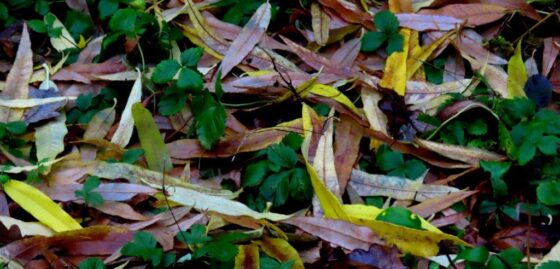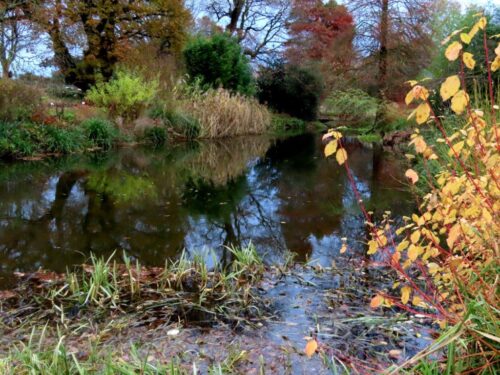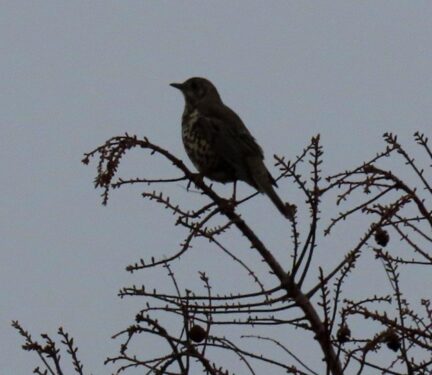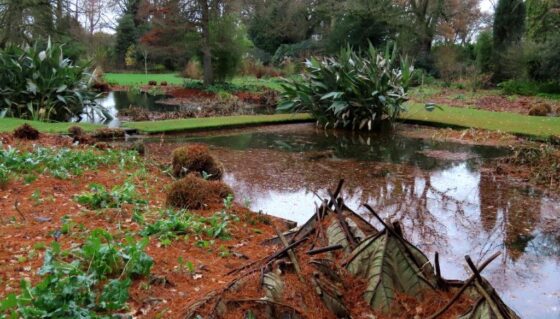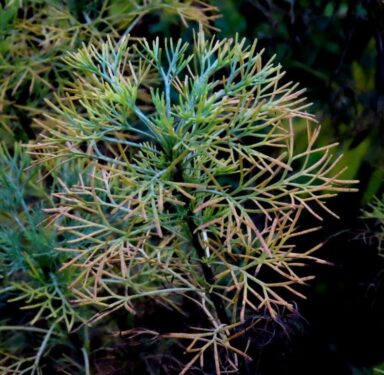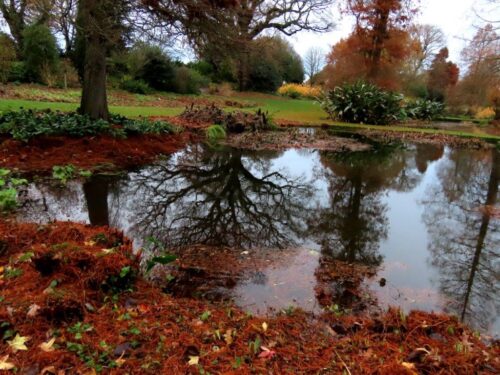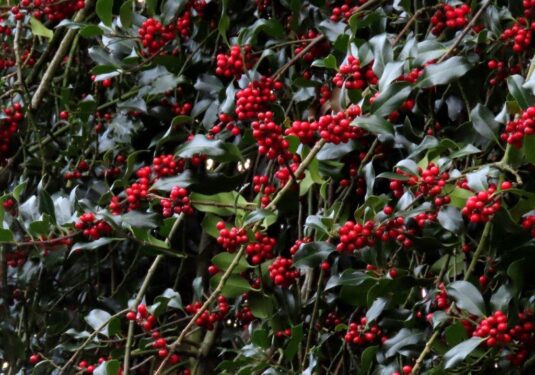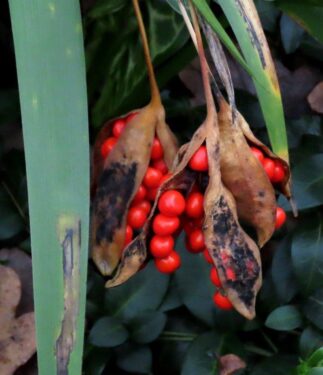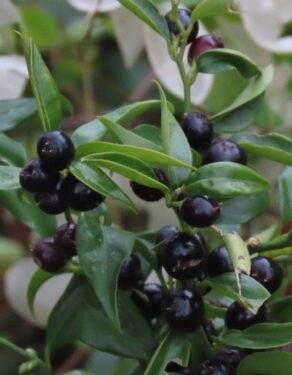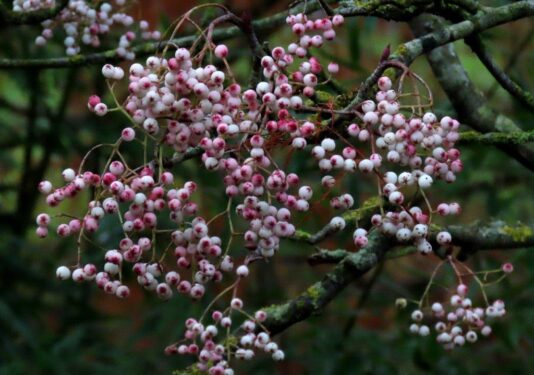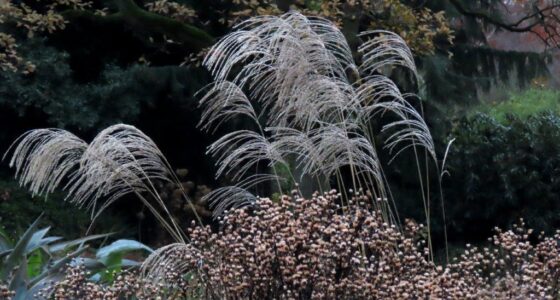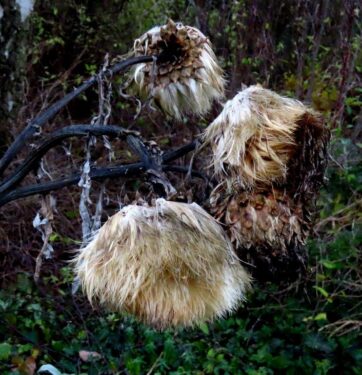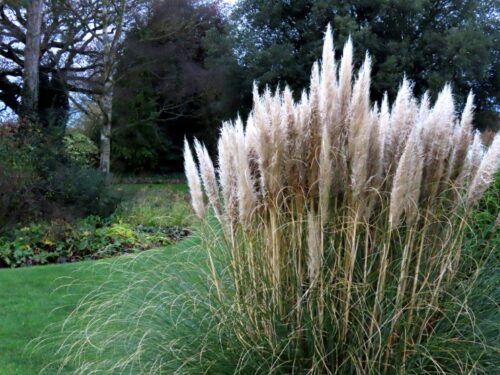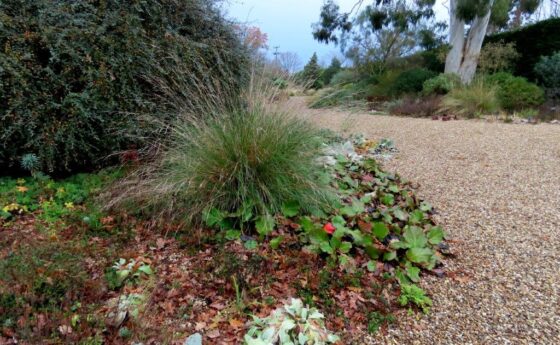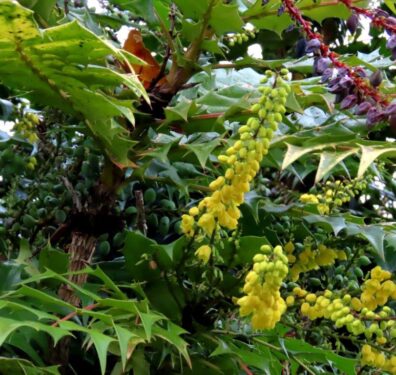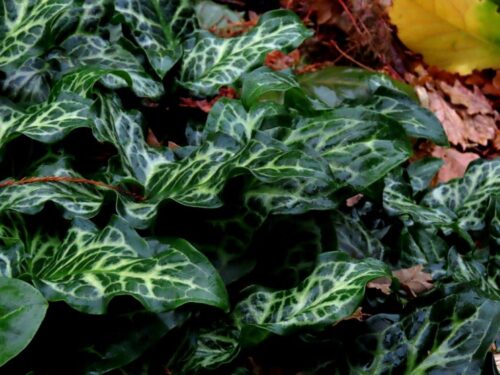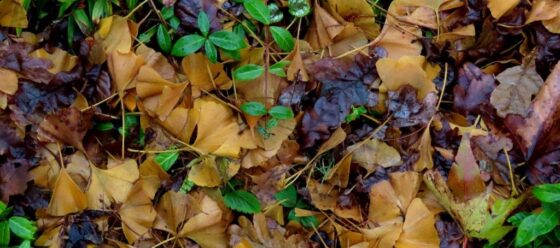What a way to round off another year filled with the pleasure and privilege of working at the Beth Chatto Gardens! Today may have been unremittingly dull and, after three hour-long walks, pretty chilly – but at least the air was still and the drizzle largely held off.
Around fifty Friends of the garden joined for one or other of the exclusive walks and, while there was little actual wildlife to see, that left all the more time to talk about things we do in the garden to encourage its use by wildlife and to try and encourage similar things in their own gardens. Spreading the Word about Rewilding the Mind!
There were of course a few birds around, with Mallards and Moorhens on the lakes, Chaffinches, Goldfinches and Siskins in the trees, and Redwings flying over. But most activity was heard rather than seen: roving bands of tits, including a party of Long-tailed Tits; Robins singing everywhere; the shrill piping of a Kingfisher all added to the winterscape. And in a promise of the spring to come, a lone Mistle Thrush delivering is languid, fluty warble – pure joy dripping from the treetops.
The fires of autumn have been tamed, toned down into subdued earthy pastels, as the garden reclines into its midwinter slumber:
The only real shards of vibrant colour come from the berries of Holly and Stinking Iris…
… although berries come in muted and sombre shades as well, those of Sorbus being especially numerous, probably because the birds simply don’t recognise pale pink as ‘ripe’.
As befits the home of Ecological and Sustainable Gardening other welcome features are the seed-heads and grassy tussocks, welcome to seed-feeding finches and overwintering natural predators like ladybirds and lacewings respectively.
Otherwise, it was a scatter of winter-flowing shrubs like Mahonia, so crucial to our bees and other pollinators in midwinter, especially at these times of climate breakdown when many are barely going into hibernation at all: if everyone could do only one thing in their gardens to increase the resilience of our landscape to climate change, planting winter shrubs would be high up there in the order of priority.
And so the year draws to a close. But already the signs of renewal are appearing, new shoots emerging, a sign that light and life will soon be returning. If you want to see the garden in its muted winter glory, then hurry – the last opening is this coming Saturday. But never fear, by the scheduled reopening on January 18th 2024 we should be seeing the first signs of spring, and our wildlife will be following suit. Do come and enjoy it – better still, become a Friend and come and see it any time the garden is open!
